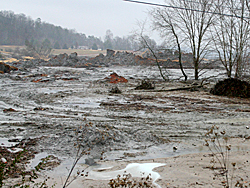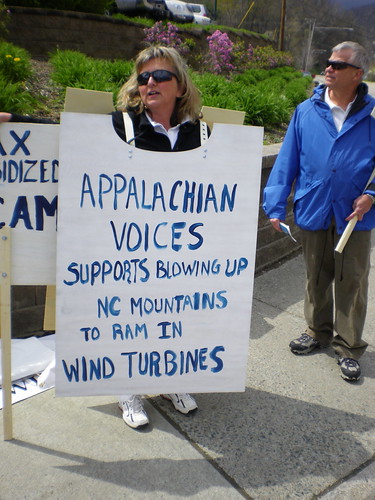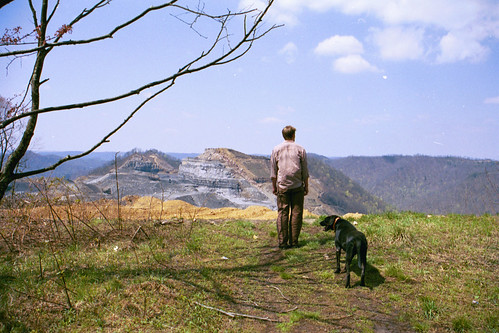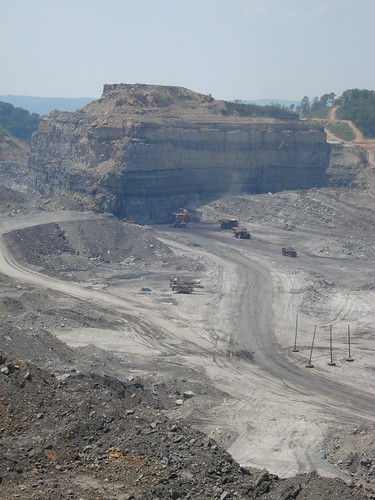By Marsha Johnston, A citizen participant in the Alliance for Appalachia’s annual Week in Washington
By all accounts, the 5th annual Week in Washington last week was highly successful. Dozens of conversations with legislators and federal agencies showed that the two most critical pieces of legislation, the Clean Water Protection Act (H.R.1310) and the Appalachia Restoration Act (S. 696), are moving.
But the strength of the legislation that emerges will depend on constituent pressure, notes Matt Wasson, Appalachian Voices’ director of programs.
Three new U.S. Congressional representatives signed on as cosponsors to the Clean Water Protection Act—Rep. Stephen F. Lynch (D-MA), Rep. Bill Foster (D-IL) and Rep. Mike Quigley (D-IL).
Illinois
Parson Brown and Kat Wallace, of The Topless America Project, Lan and Pam Richart of the Eco-Justice Collaborative, and Kentuckians for the Commonwealth Fellow Teri Blanton, had an appointment with Rep. Quigley’s aide, but ran into the congressman at the door.
“There was nothing in his record to indicate that he would not support us, so we thought maybe we just hadn’t gotten to him,” said Brown. Sure enough, when he learned of their mission, Quigley said, “We’ve talked about how there is no such thing as clean coal and about mountaintop removal on the floor of the House. If there is anything I can do to help you people, just say the word.”
So Blanton said, “Just cosponsor 1310.”
Quigley excused himself for a minute and came back to say he was on board. The group spent the next 25 minutes talking to his aide, who said, “You have an ally in this office. He is against carbon sequestration and mountaintop removal. We just need you to give us ammunition.” They invited Rep. Quigley to the reception, but he demurred, saying he had to “battle lobbyists in a hockey game,” but he was so thrilled with his “I Love Mountains” button, he wore it to the game.
California
The California participants, including Maureen Robinson, a laid-off teacher who reached into her savings to travel to Washington D.C., Dennis McHale, a long-time eco-activist in Orange County, and I, got great response from Rep. Loretta Sanchez when they ran into at her office. Legislative assistant Jessica Fernandez suggested that Sanchez, who has cosponsored the Clean Water Protection Act, could write a letter to the entire California delegation of 54 representatives, urging them to cosponsor the bill, which already boasts half of the delegation. For her part, Rep. Sanchez put on an “I Love Mountains” button as she set off to a meeting at the White House. All of the California participants repeatedly exhorted the California lawmakers to take a lead on mountaintop removal, given the state’s frequent lead on environmental issues and their fewer obligations to the coal industry.
Montana
Week in Washington citizen lobbyists got some promising feedback from a number of senators, even if their legislators did not sign on to cosponsor.
After last year’s Appalachian Treasures Tour of Montana and other states, dogged persistence by Sarah Perry, a stay-at-home Montana mother, got Week in Washington a meeting with Senator Max Baucus. And this was not just a little meeting. For an hour-and-a-quarter, Sen. Baucus and his senior staff listened to a Week in Washington group plead with him to do something to ensure that children in Appalachia have clean drinking water. Perry had also brought Sen. Baucus and his counterpart Sen. Jon Tester custom t-shirts that declared Montanans’ support for clean water and intact mountains.
At the Montana constituent breakfast the next day with Senator Jon Tester, Sen. Baucus made a point of wading through the crowd to take the Alliance for Appalachia group aside and say, “Something has to be done.”
New York
Outside U.S. Senate Hart Building hearing room 216, Keesee, from Moorehead, Ky., recognized that Senator Joe Lieberman (D-NY) was important but couldn’t place his name. Nonetheless, Keesee asked if he could walk with him, and if Sen. Lieberman had heard of mountaintop removal mining.
“He told me he had heard only a minute amount about it and, as I was telling him about Senate Bill 696, he was very receptive, the most courteous person I’ve talked to here. He said he will definitely look into it, and mentioned that he was very environmental. He introduced himself as he left,” Keesee said.
On his first trip to Washington, Keesee had a lot to tell the senator. When he was growing up in the Kentucky coalfields, they could never use the water without boiling it, which was always rust-colored. “On good days, it was somewhat transparent, but mostly opaque and smelled bad, kinda like rotten eggs,” he said, adding that he didn’t make the connection between his family’s bad water and mountaintop removal mining until he moved further away from the coalfields.
Senate Environment and Public Works Committee
Tom Fox, senior counsel for the Senate Environment and Public Works (EPW) Committee, where the Appalachia Restoration Act resides, reported that the EPW committee is “trying to find the sweet spot” of new language that would target only mountaintop removal and not all surface mining without resorting to the narrow mountaintop removal definition used in the Surface Mining Control and Reclamation Act.
Fox said the committee called in all of the scientists who authored Science magazine’s blistering condemnation of mountaintop removal to brief committee members, and that one of them, Dr. Hendryx, is compiling more detail on mortality in mountaintop removal counties. As for potential Senate supporters, Fox noted that Sen. Robert Byrd (D-WV) intentionally read his recent statement exhorting the coal industry to “embrace change” on the radio so that “the people at home would know it wasn’t just for his staff.” He expressed little hope, however, that Sen. Byrd’s counterpart, Sen. Jay Rockefeller, would abandon his opposition, given his recent remarks about West Virginia having “only 4 percent flatland”, an apparent reference to the idea that leveling mountaintops is beneficial to the state.
Diana Withen, from Wise County, Va., reminded Fox that the coal companies are not just destroying mountains, “they are blowing up whole communities.” A fellow Virginian, Dorothy Taulbee, she said, had seen her 100-year-old oak home, which she purchased for approximately $100,000, literally shook apart by three surrounding mountaintop removal sites until it was worth no more than $12,000, which is what the coal companies paid her for it. Although she doesn’t personally live in the coalfields, she said that, standing in town, she can feel the vibrations of the explosions several times a day.
Changing the language in the Appalachia Restoration Act to exclude surface mining piqued the interest of Jonathan McCracken, legislative assistant to Sen. Sherrod Brown (D-OH). Although Sen. Brown was involved in the original drafting of the House bill when he was a congressman, he has yet to endorse Appalachia Restoration Act. At his weekly “constituent coffee”, Bill Price, Ohio resident and Sierra Club environmental justice organizer, Mandeep Gil, a recent Ohio resident, and I, informed McCracken about the changes being worked on to address Sen. Brown’s concerns about its potential impact on surface mining in Ohio. He said he had a good working relationship with bill co-author Sen. Benjamin Cardin’s (D-MD) legislative aide, and that he would work with her. Price gave him the name of Alexander’s aide as well. The group then gave the same information to Senator Brown, who took the pamphlet and said he would look into it.
After a green energy panel at the Senate Democrats’ Progressive Media Summit on Wednesday. Bob Kincaid, host of The Horn, America’s Liberal Voice, asked Senators Barbara Boxer (D-CA), Jeff Bingaman (D-NM), Benjamin Cardin (D-MD), Jeanne Shaheen (D-NH) and Debbie Stabenow (D-MI) why they had not ALL signed onto Sen. Cardin’s Appalachia Restoration Act. The West Virginia native told them that mountaintop removal is intolerable to people all across this country. He corrected Sen. Shaheen’s mistaken impression that the bill would end all coal mining. In response, they said they expect to report the bill out of committee this year.



 ” />
” />






